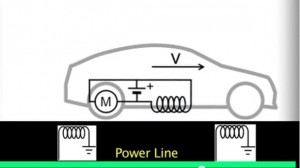Stanford researches may have solved the problem of range anxiety by wireless charging technology that could one day create an electric highway.
Wireless recharging already is used by some electric vehicle charging stations to fill up batteries without cords or plugging into an outlet. MIT helped pioneer this technology and spun it off into a wireless charging startup, WiTricity. However, Stanford researchers improved on this concept and devised a way to transmit 10 kilowatts of electric power across a 6.5-foot distance with minimal energy loss. By overcoming transmitting electricity across a significant distance, researchers will make it possible to pave a highway with wireless conduits that can provide addition power to EVs and let them operate indefinitely.

 Follow
Follow
